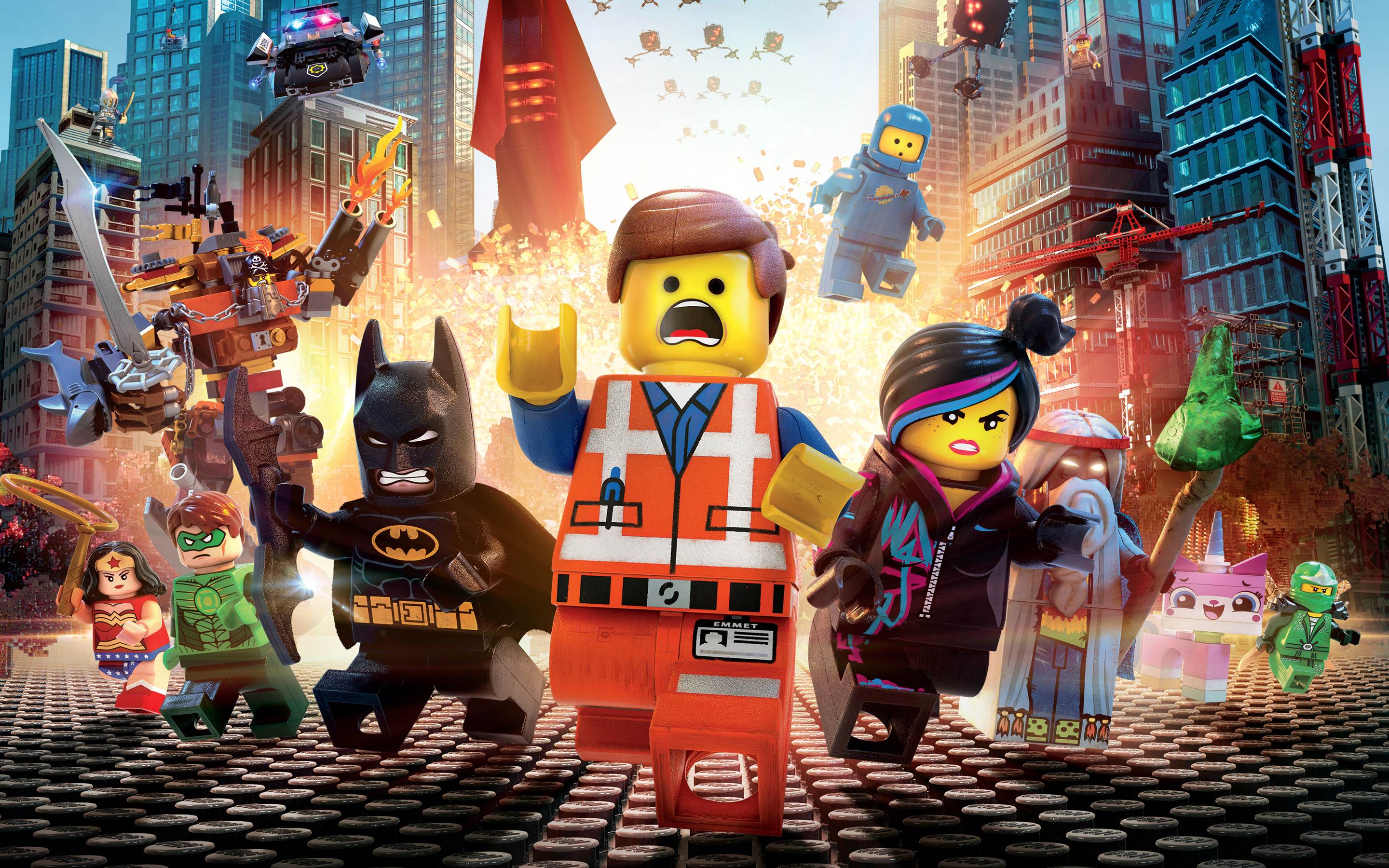
Image Credit: Forbes
Not only did seeing The Lego Movie (2014) lodge the parodic pop song “Everything is Awesome!” firmly in my skull, it also sent me scrambling for a way to intelligently theorize the film's highly sophisticated commentary on politics, capitalism, gender and the body. I emerged from my search with a brief history of biopolitics firmly in hand, and, with “Everything is Awesome!” still running through my head, I will now start assembling the theoretical pieces needed to construct an insightful critique. Part 1 of my ruminations on The Lego Movie, then, provide an introduction to the theories I'll be using in Part 2. Stay tuned, all, because EVERYTHING IS AWESOME. Hopefully these posts will nicely compliment Scott's awesome thoughts on how The Lego Movie capitulates to some disturbing movie cliches in the name of creativity.
The Lego Movie deals specifically with the way politics intersects with everyday life. Thomas Lemke's useful Biopolitics, an Advanced Introduction, defines biopolitics as “a constellation in which modern human and natural sciences and the normative concepts that emerge from them structure political action and determine its goals” (33). In other words, the ways we understand “life,” through science, sociology, and other disciplines, affect political action. For the French philosopher Michel Foucault, the theorist credited with the birth of biopolitical thinking, it is a “specifically modern” (Lemke 33) form of power, a historical phenomenon. Biopolitics replaces the absolute authority of old sovereign rule with disciplinary mechanisms designed to keep bodies bound by certain space and time restrictions. Power, in a biopolitical disciplinary society, reveals itself in regulatory measures that determine the lives of its citizens. Institutions like schools, hospitals, prisons and military barracks exemplify the principles of a disciplinary culture.
Foucault argues that the shift from an agricultural to an industrial society in eighteenth-century Europe sparked the emergence of disciplinary societies. Other theorists have since expanded upon Foucault's work, tweaking and refining his understanding of the link between “life” and politics. Gilles Deleuze, for example, argues that our society has moved past its disciplinary moment into a radically different area: one of control. In their groundbreaking 2000 work Empire, Michael Hardt and Antonia Negri use Deleuze's concept to demonstrate the importance of globalism and capitalism for today's sociopolitical structure. According to their work, in a society of control, power “extends throughout the depths of the consciousness and bodies of the population—and at the same time across the entirety of social relations” (24). If discipline relies on institutions regulating the movement of bodies, control internalizes the process so that individuals effectively regulate themselves. Institutions become less prominent, but each and every aspect of social life becomes saturated with biopower.
For Hardt and Negri, biopower is “a form of power that regulates social life from its interior, following it, interpreting it, absorbing it, and rearticulating it” (23-24). They call the global prominence of biopower, bolstered by the international reaches of capitalism and global communications technologies, “Empire.” Empire is a modern, diffused form of sovereignty, a global presence, spread through all dimensions of social, political and economic existence. Empire, however, derives its energy from the “multitude,” a radically new sort of global proletariat, a group that simultaneously fuels Empire and threatens it. Instead of despairing over the total reach of Empire, Hardt and Negri argue that “the passage to Empire and its processes of globalization offer new possibilities to the forces of liberation...The creative forces of the multitude that sustain Empire are also capable of autonomously constructing a counter-Empire, an alternative political organization of global flows and exchanges” (XV, “Preface”). The positive biopower of the multitude stands in promising opposition to the restrictive biopolitics of Empire.
As Thomas Lemke points out, however, Hardt and Negri seem to arbitrarily assign a liberatory, ontological existence to the bio(em)powered multitudes. Treating “life” as a “transhistorical entity” (Lemke 74) can problematically break down into “natural” assumptions about gender roles, sexuality, and identity. There is a danger in the power of the multitude: could the emancipatory principles of global biopower function as another way to re-inscribe hegemonic ideologies? Judith Butler's Gender Trouble can intervene neatly into any revolutionary impulse that relies on foundational identity politics to carry it through. Butler's work largely dismisses feminist politics that rely on idealizing “repressed” female identities; the glorification of the maternal and the retreat into lesbian political consciousness does not, Butler argues, dismantle compulsory heterosexuality. Rather, these strategies reaffirm socially constructed gender identities and re-inscribe “woman” as a starkly delineated, ontological category. Carrying Butler's theory from gender politics into the broader realm of biopolitics, we are prompted to ask: if we assume an essential, prediscursive, creative power from the multitude, what hegemonic principles might be unintentionally reinforced in any revolutionary moves “against” Empire?
The Lego Movie, a 2014 computer-animated film, seems practically created to serve as a fictional, highly stylized thought experiment for Hardt and Negri's liberation of the multitude. The movie follows Emmett, a regular old Lego figurine living out his normal life in an urban Lego landscape that looks suspiciously like a vision of corporate America. Up-beat, top-of-the-charts pop music assures the citizens of this Lego world that “Everything is Awesome!” even as their leader, President Business, casually drops references about the end of the world and putting disobedient individuals “to sleep.” No one can pay attention to these cryptic signs anyway, since, after all, it's almost Taco Tuesday.

Image Credit: GeekTyrant
Seriously, though. Taco Tuesday sounds awesome. Just like this music video!
Through a series of accidents, Emmett falls in with a group of revolutionaries bent on taking President Business down, reuniting all of the various Lego worlds and liberating Lego citizens around the Lego globe. The revolutionaries are all “Master Builders,” individuals with the uncanny ability to take apart the tidily assembled Lego landscape in order to craft their own unique creations. Gradually, Emmett learns to delight in deviating from his rule book and the revolutionaries learn not to underestimate the “normal,” apparently brainwashed citizens of President Business's society. Ultimately, Emmett and the Master Builders rely on the creative powers of the masses in order to dismantle President Business's overly strict, rule-bound world. The Lego Movie can be read as a rather sophisticated allegory about using the master's tools (or Lego pieces) to effectively deconstruct the master's house. In just such fashion, the multitude might reconfigure Empire, turning their mutual citizenship into teamwork, their individualism into self-pride and their indoctrination into a weapon.

Image Credit: Comics Bulletin
"Yes, excuse me? I thought we were being subversive?"
This reading, however, leaves out several crucial points. If a capitalistic, tyrannical global Empire can be so easily compromised, why doesn't the function of gender roles shift in the utopia of the multitude? Arguably, Emmett only finds the strength to break apart this global Lego Empire because of the promise of a relationship with Wild Style. The movie prompts Wild Style herself to discard her revolutionary monicker, a name she has chosen for herself, and return to Lucy, her given, much less threatening, name. The actual “bodies” of these Lego figurines also provide a fertile ground for a performativity critique. The sexes assigned to the protagonists come from repeat performances of gender prompted, of course, by the way the “hand in the sky,” the human actually playing with the Legos, understands it. Can reimagining Empire actually dismantle all of our problematic ideologies or must hegemonic building blocks, like the ontological existence of gender, fuel the deconstruction of other social injustices?
Comments
Wild Style
I'm interested to see what comes next.
Also, I am shocked that I had forgotten about Wild Style's reversion back to Lucy, probably because I'm a bit obsessed with the trope of the female "Heinlein's Competent Man," which seems to be nearly the only ideal of femininity allowed in modern epics. The reversion to a previous gender trope (the helpless, as opposed to omnicapable, heroine) is rather interesting. I'm not sure what narrative or rhetorical work it is doing, though.